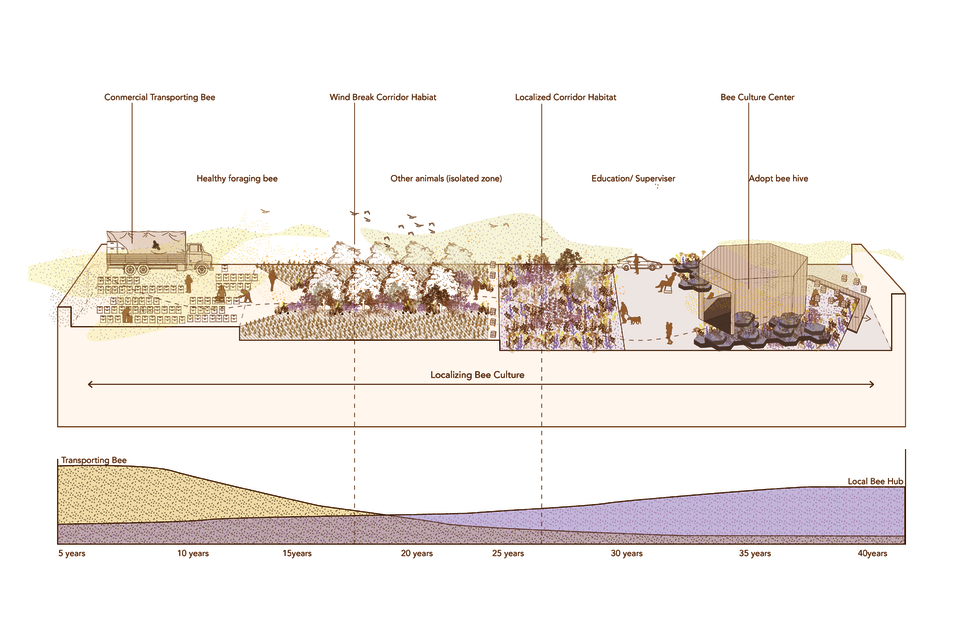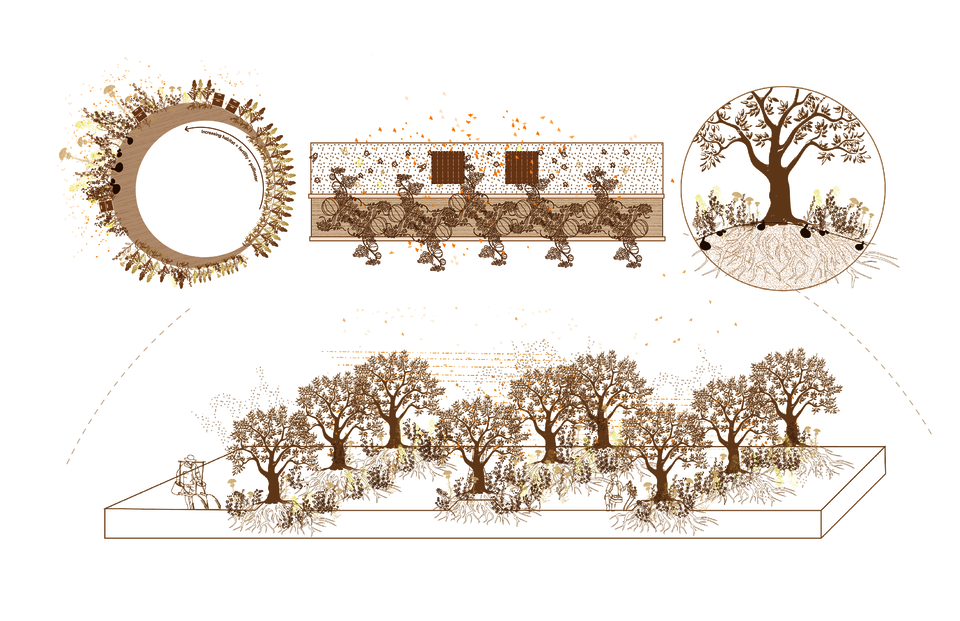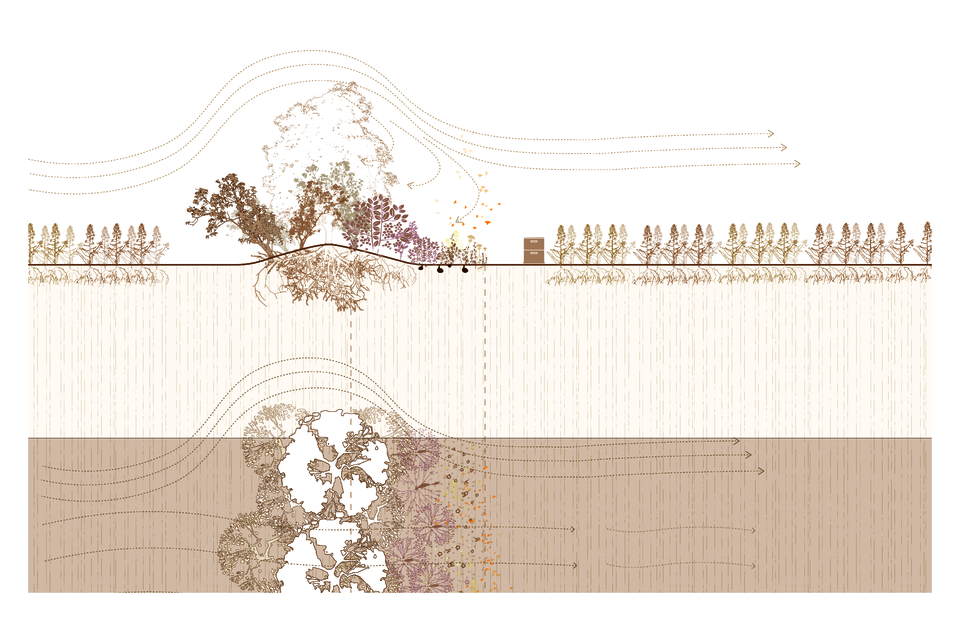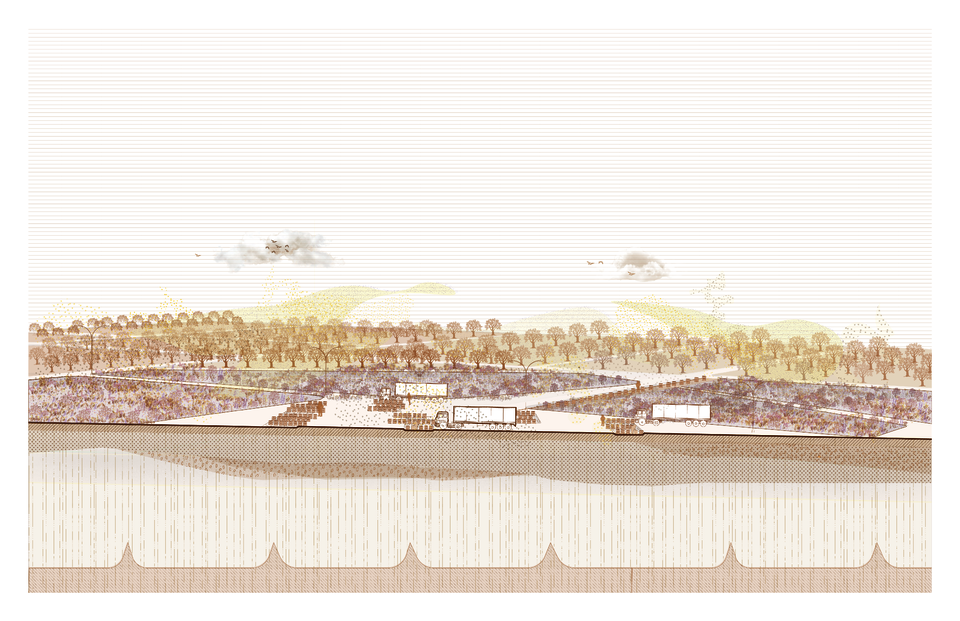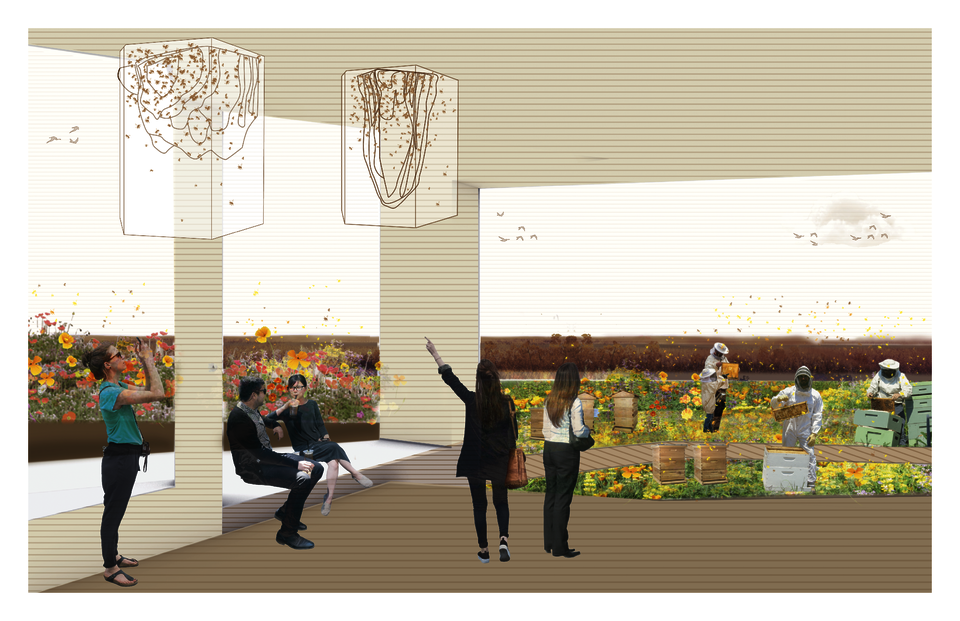Image
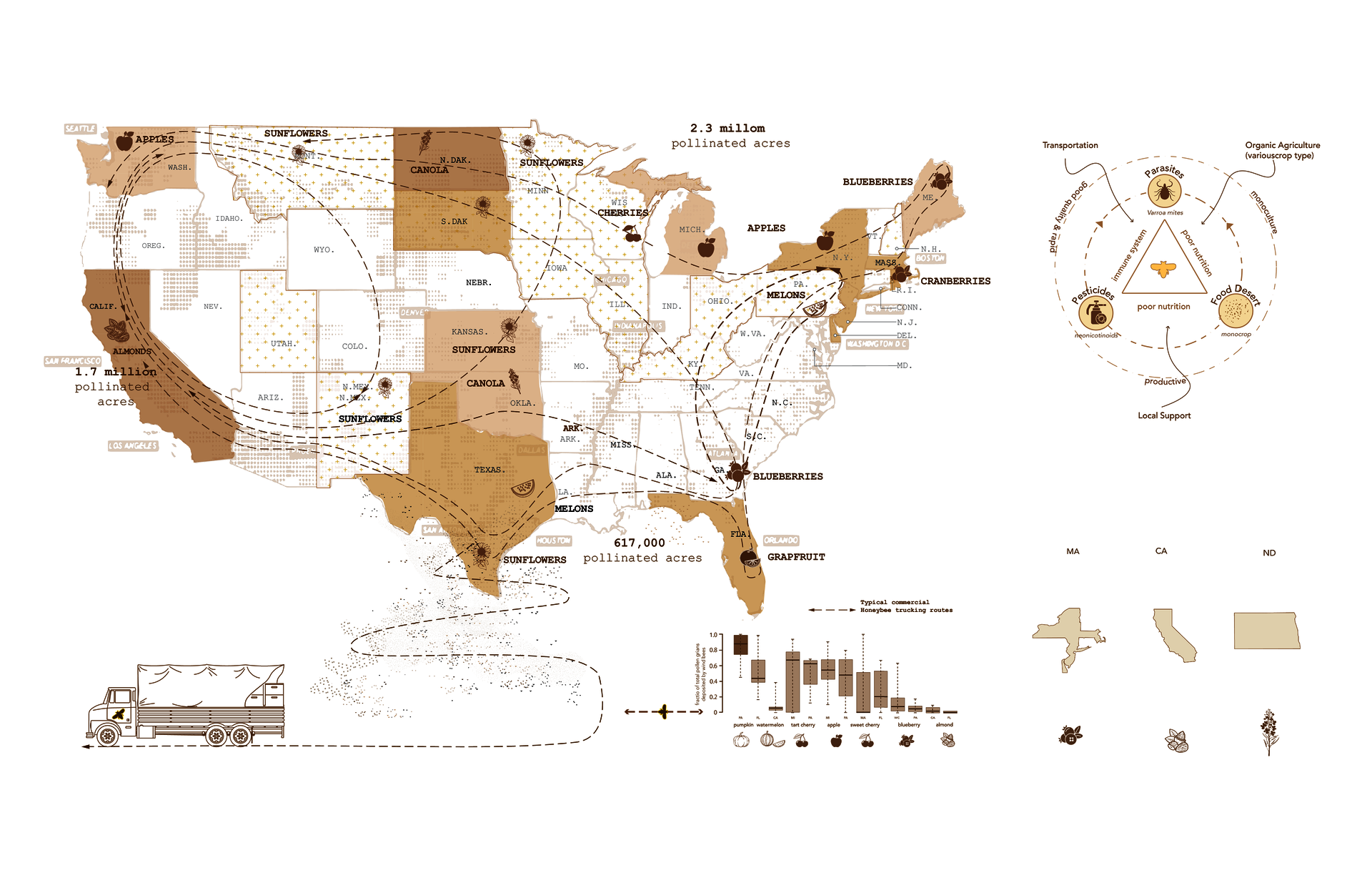
Jinghan Zhou
Bee Stations: Refueling bees and creating opportunities for education
Commercial honey bees are transported between pollinated crops and play an essential role in our agricultural system. More than 70% of the crop depends on bee pollination, and during the blooming season, bees are transported around the country to meet the pollination needs of farmers. However, bee populations are declining in many regions of the world, threatening food security and ecosystem functions. The primary cause of colony collapse is anthropogenic pressure, including over-cultivated land, modern agricultural practices, mono-crop agriculture, and the overuse of pesticides. All these activities are causing bees, especially honeybees, to suffer from pesticide pollution, poor nutrition, and parasite attacks. Without a more diversified landscape strategy, we will continue to decline bee populations, with significant impacts on agricultural production and terrestrial ecosystems.
My thesis proposes a network of bee stations and corridors that could improve the health of transported bee populations, increase local beekeeping, and help educate the public about the importance of bees and pollinators. The bee stations have 100 acres of diversified high-quality wildflower species where trucks that transport bees can stop to “refuel” their hives. The bee stations also have an education center where the public can walk through the wildflower fields, observe bees, make beehives, and learn how to keep bees. In addition to the bee stations, habitat corridors would be strategically “spliced” into existing agricultural fields to create a more diversified forage for bees within the farmland mosaic. Combined, both strategies would become a powerful tool to provide a healthy, diversified, and resilient system to support bee health and reduce colony collapse.
Image

Beekeeping Routes and Significant Issues
Image
11x17
2022
Bees serve as a direct food source for some animals, such as birds, pollinate fruiting plants, which serve as a food source for a broader range of animals. They provide environmental services that maintain ecosystem health. Bee populations are declining in many world regions, threatening human food supplies and ecosystem functions. The primary issue is anthropogenic pressure, including over cultivated land, modern agriculture systems, mono-crop deserts, and the overuse of pesticides. All these activities are causing bees, especially honeybees, to suffer from pesticide pollution, poor nutrition supply, and parasite attacks.
Commercial honey bees also play an unavoidable essential role in our food chain and feed the whole ecosystem.
Image
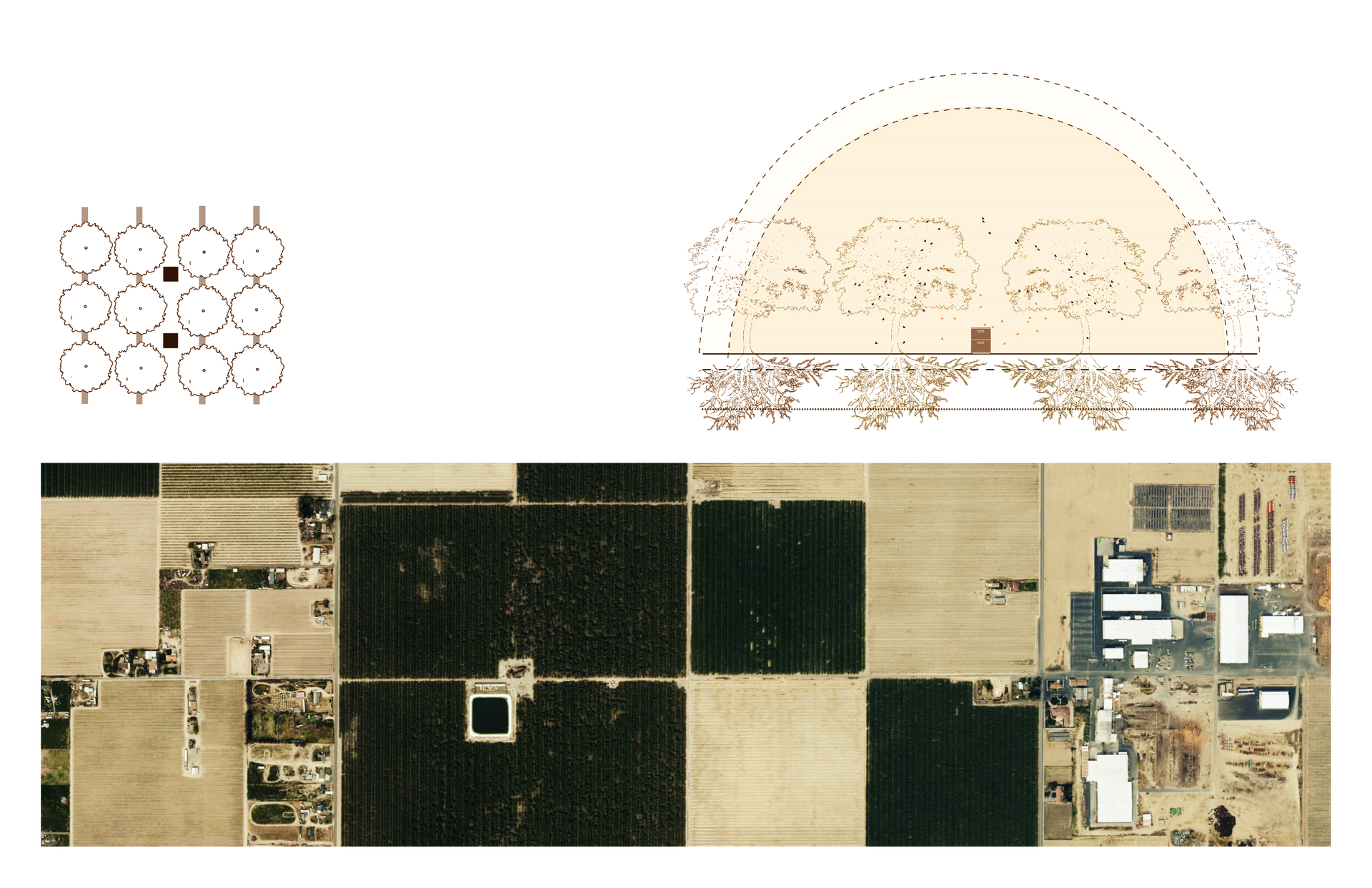
Primary beekeeping crop types analysis - CA, Almond
Image
11x17
2022
The Almond industry is one of the major crops that plays an essential role in the international sector. Thus, almond fields in California require the largest gathering of bees all over the U.S. Each February, 60% of American bee colonies travel to almond plantations. This image shows the typical layout of the almond field in California, and each acre of the almond field requires 1-2 hives of beehives.
The central beekeeping crop states are California, North Decolda, Texas, and Massachusetts, with four types of the major pollinated crops: almonds, canola, watermelons, and cranberries.
Image
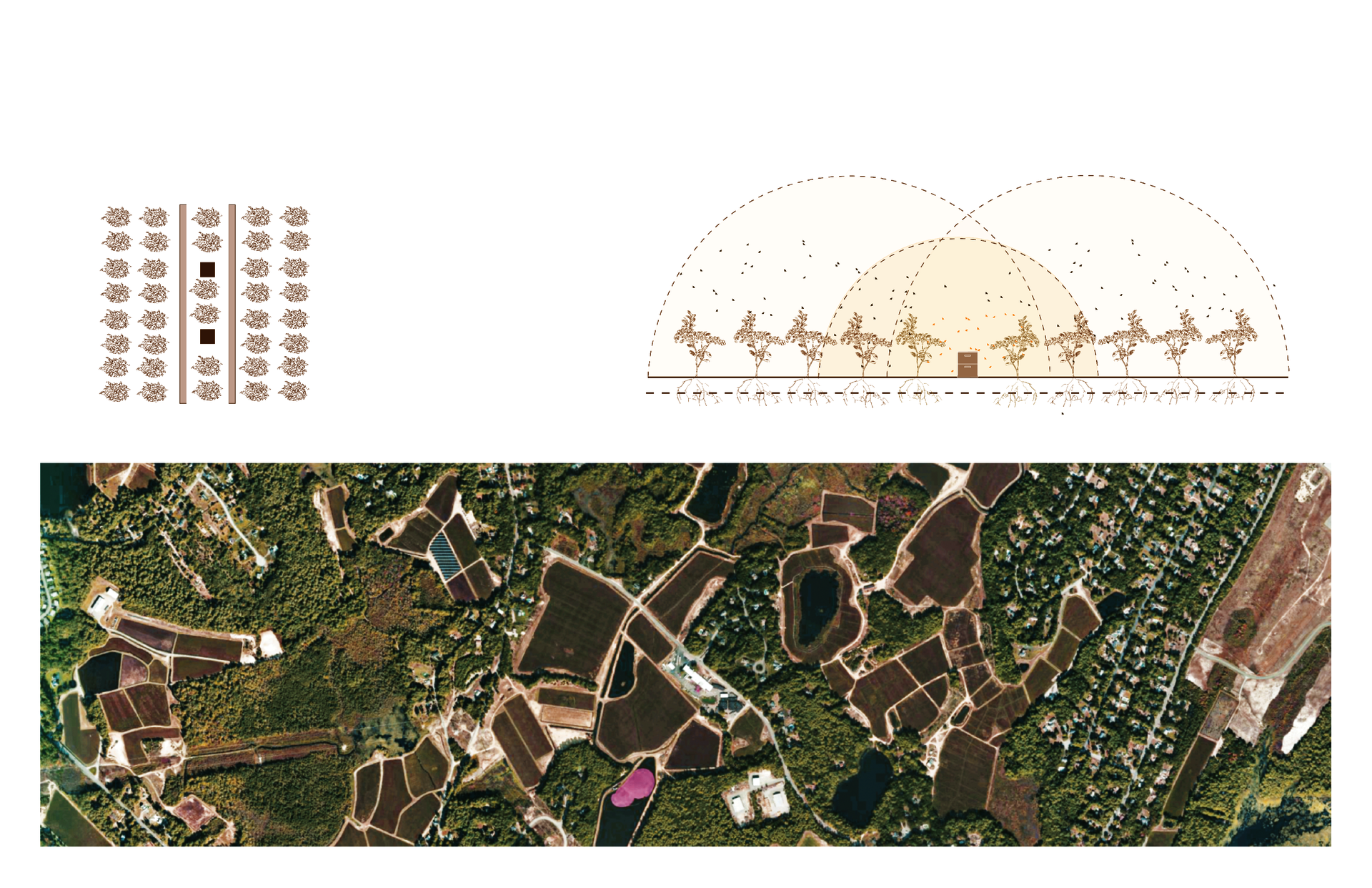
Primary beekeeping crop types analysis - N.D., Cranberry
Image
11x17
2022
This map shows the typical layout of the cranberries field in Massatusas, which shows the wetland inside the cranberries field. Each acre of the cranberries fields requires 1-2 hives of the honeybee.
The cranberry industry is one of the major crops that plays a vital role in the international sector in Massachusetts.
Image
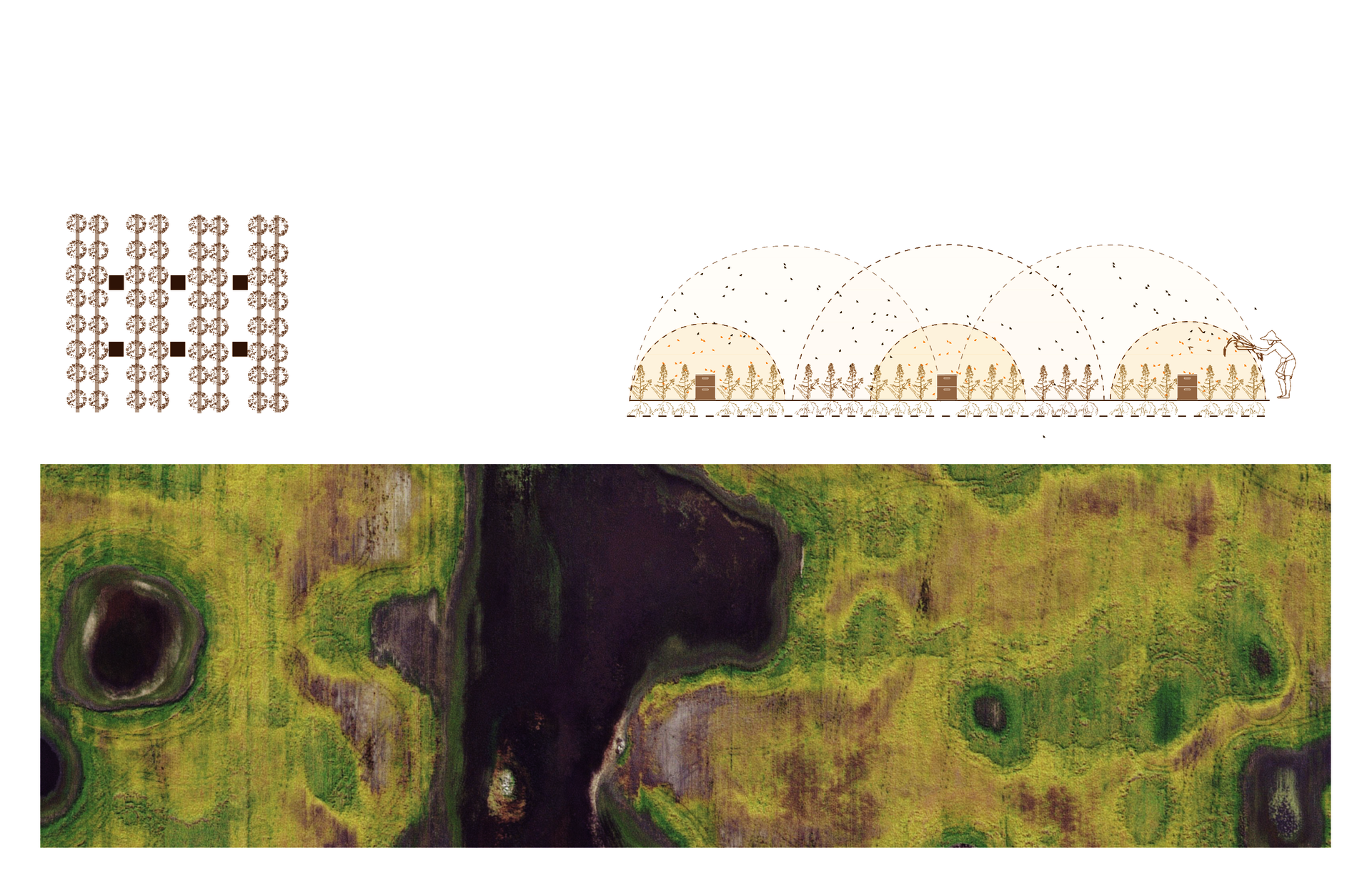
Primary beekeeping crop types analysis - N.D., Canola
image
11x17
2022
This map shows the typical layout of the Canola field in N.D., which shows the kettle ponds inside the canola field. Each acre of the Canola fields requires 2-3 hives of honeybee.
The Canola industry is one of the major crops that plays a vital role in the international sector in Texas.
Image
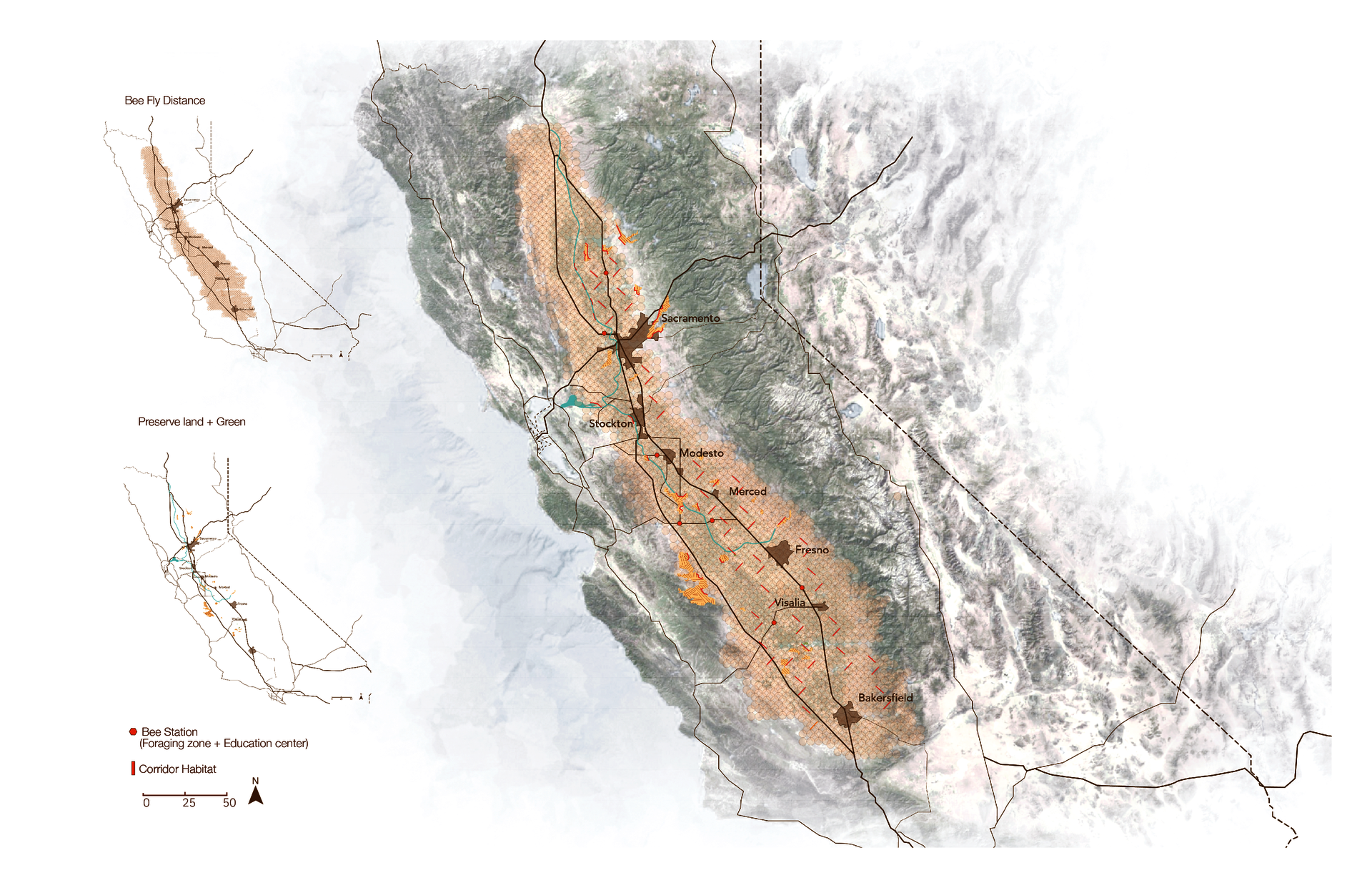
Bee Station Network Regional Analysis
image
11x17
2022
In order to solve the colony shortage, the design aims to create a bee station network that provides a corridor habitat zone in between the existing crop fields that supports the local bee and a series of bee stations that provide refueling zones for commercial bees. At the same time, each station would provide education functions for residents to localize beekeeping knowledge.
Station Network regional system proposes a future bee system that encourages localizing pollinator habitats and creates better transporting conditions for bees.
- Architecture
- Ceramics
- Design Engineering
- Digital + Media
- Furniture Design
- Global Arts and Cultures
- Glass
- Graphic Design
- Industrial Design
- Interior Architecture
- Jewelry + Metalsmithing
- Landscape Architecture
- Nature-Culture-Sustainability Studies
- Painting
- Photography
- Printmaking
- Sculpture
- TLAD
- Textiles
